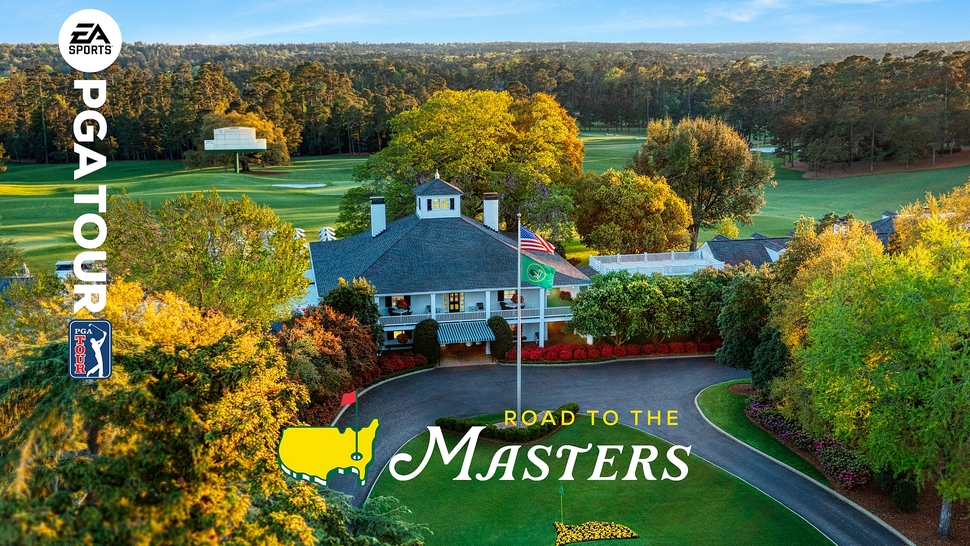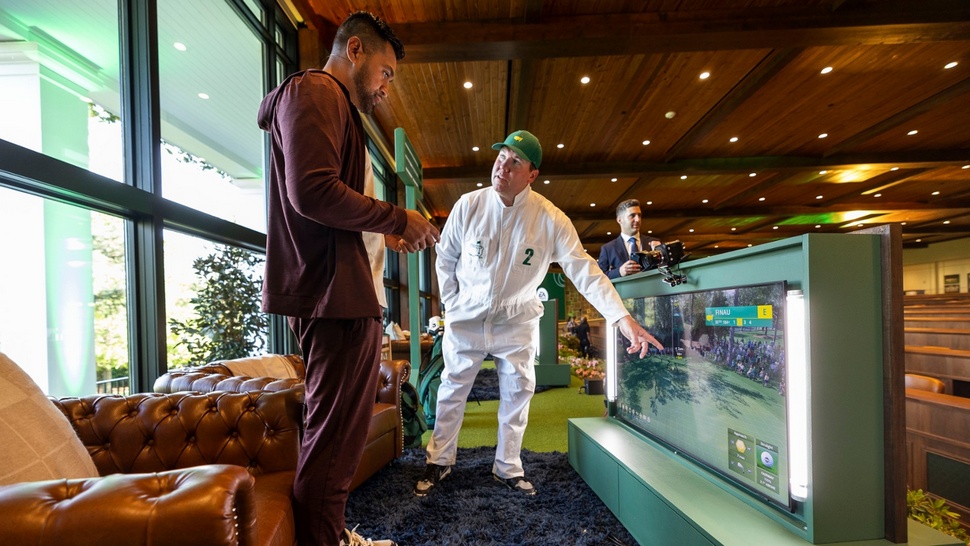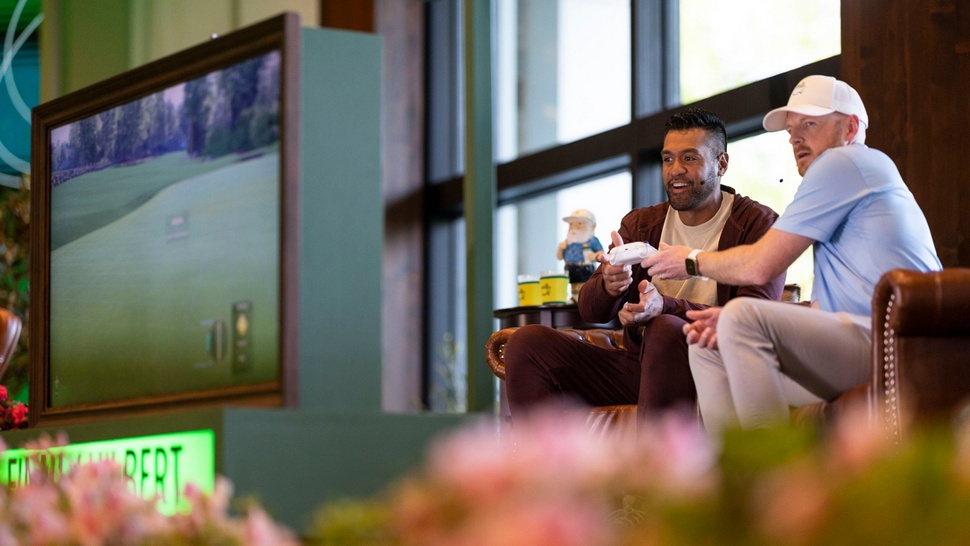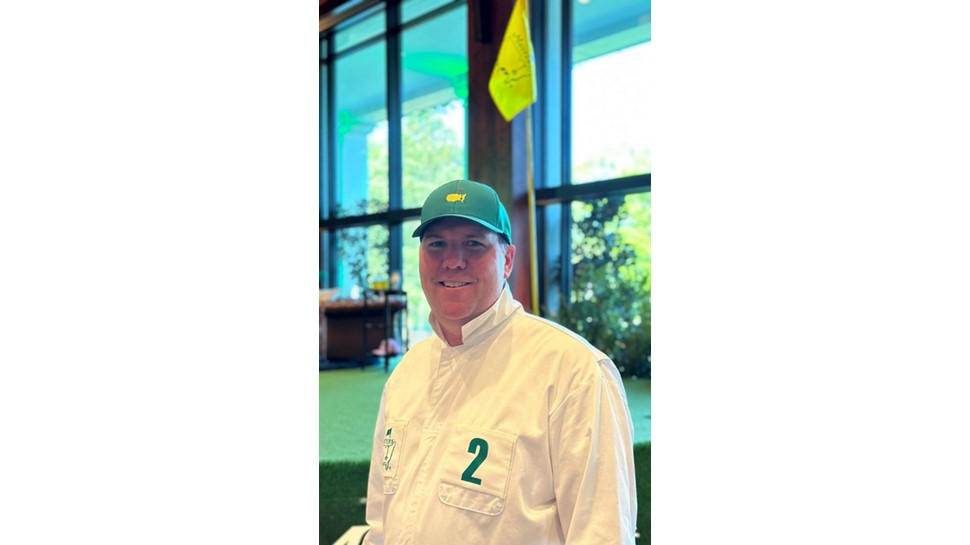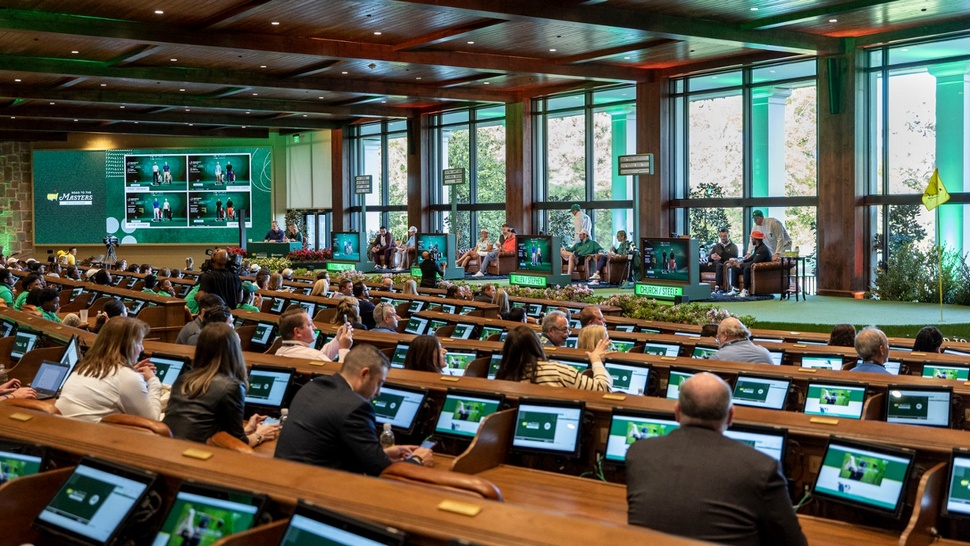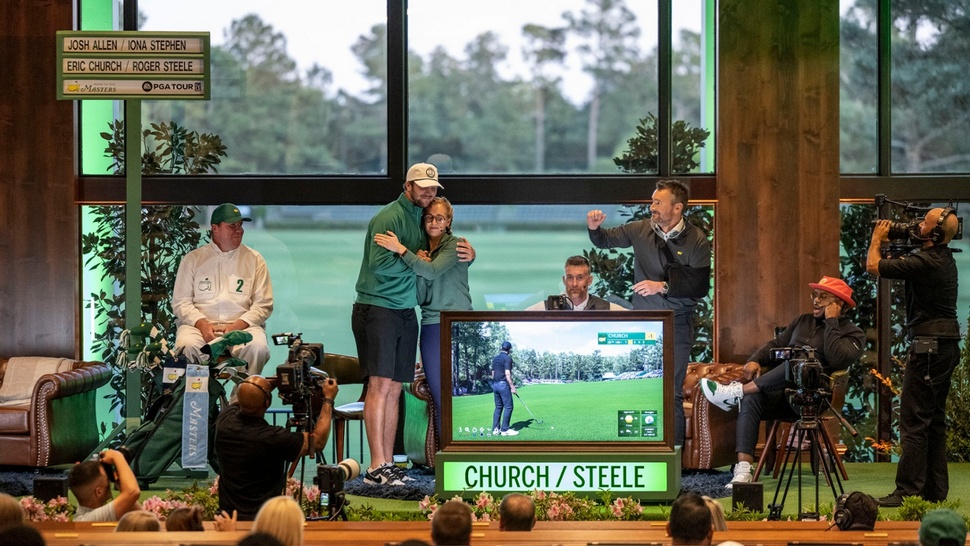Background
Ben Ramsour has been a Producer at EA (Electronic Arts) for close to 12 years where he led development efforts and managed relationships with major sports and entertainment properties, including the NFL, PGA TOUR, and Augusta National.
His efforts in leading product development, creating licensing strategies, and managing partnerships have helped in the making of EA’s pillar sports video games including Madden NFL Football, NCAA Football, Tiger Woods PGA Tour, and most recently, EA SPORTS PGA TOUR. Ben is also an avid golfer.
My Life
As a kid, I was sports-obsessed and a big fan of EA SPORTS video games. In my junior year at Notre Dame, I won an NCAA Football tournament against over 200 players and advanced to the national tournament in Las Vegas where I ended up hitting it off with the key marketing leader from EA. Fast forward a few months and I scored a marketing internship in EA’s golf business.
After college, I lived in Chicago and worked as a consultant for IBM, developing my craft as a Business Strategist and Project Manager. However, my desire was always to return to EA. In early 2011, my now-wife was presented with an opportunity to move to Orlando to work for the Walt Disney Company. I jumped at the opportunity to follow her, primarily because she’s the love of my life, but also because the NCAA Football and PGA TOUR franchises were made at EA’s Orlando studio. After some networking, I was brought on as Development Director on the NCAA franchise later in 2011.
After shipping NCAA ‘13 and ‘14, I spent 5 years on various teams across the Madden franchise. In 2019, our Executive Producer asked if I’d be interested to help resurrect our golf franchise. As an obsessive golfer and huge fan of golf video games, I jumped at the opportunity. Throughout development, I’ve enjoyed working with our many licensing partners to make an incredibly authentic and engaging product. Building EA SPORTS PGA TOUR has been the thrill of my career.
***
You wake up in the morning, what’s the driving passion?
First, second, and last is being an engaged and loving father and husband. Professionally, I like the challenge of making something timeless. I look back on NCAA ‘14 and am proud of what our team accomplished because it is still so relevant for many people. Replicating what I believe we have done with our latest PGA TOUR release.
I want to make products that I can pick up and play with my friends who are scattered around the world. Additionally, I like listening to our fans for design inspiration. Ultimately, I’m driven to push the needle to surprise and delight the next generation of gamers and golfers.
How did golf come on the radar screen for product development at EA Sports?
With Gen 5 consoles (Sony PlayStation, Nintendo 64) and the advancements in Frostbite (video game engine), we knew that we could push the envelope from a graphics and engagement standpoint. Gamers were ready for an elite Gen 5 golf experience.
As preliminary designs were presented, we got buy-in that we were on to something. Then the PGA TOUR, Augusta National, the USGA, R&A, PGA of America, and LPGA came into the fold and it was full speed ahead.
You’re an active golfer, how much does that help in your efforts in creating a meaningful connection?
It’s not just me, but our team is full of golf-obsessed people. It helped tremendously in our brainstorming sessions and feature-ideation sessions.
One example, we were at a PGA TOUR event and ended up close to an errant shot in the rough. We were close enough to hear the caddie and golfer having an intense conversation about what shot to hit. The golfer said, “I should hit a stock 8, but I got a little bit of a flier lie and a bit of wind coming from back right, so I should probably hit a finesse 9.”
They went back and forth before he finally airmailed it over the green. That moment was a massive inspiration for how we wanted our gamers to think before each shot and is reflected in our Shot Type and Gameplay designs found in the game.
What’s the hardest aspect in developing the golf connection?
Finding the balance between full simulation golf, but easy enough that anyone can pick it up and have fun. Let’s be honest, real golf can be incredibly challenging and frustrating. Our goal is to make novice, weekend warrior golfers feel what it’s like to be a professional. Pro golfers don’t think about the mechanics of their swing, but rather how they’re going to use their different tools and shot types to hit the perfect shot. That’s what we tried to recreate.
Some of the most fun moments I’ve had were putting the game on Arcade mode and playing with my young kids and 73-year-old dad. They’re not hardcore gamers but love the escape, challenge (relative to their skill level), and camaraderie of playing these amazing courses together.
Conversely, we know many folks like the challenge of an incredibly hard mechanic. We wanted to preserve that by allowing the most hardcore to crank up the settings and turn off the helpers.
In terms of a time factor – what’s the length of time from conceptual idea to actual consumer rollout?
For PGA TOUR, it took about four years from early prototypes to launch.
What role does the feedback process play in your development efforts?
It’s critical. We’re always listening to our fans and utilizing our consumer insights team to help us prioritize the most impactful features. Having feedback during development was crucial in helping us iterate on things like our course list, swing mechanic, challenge system, and progression loop.
Even after launch, audience feedback is crucial as we continue finetuning the game and incorporating new aspects discussed during the development cycle. I’m getting into “video game talk” here but we just added the 3-Click swing mechanic which has players click specific buttons instead of using the analogue (joy)stick to hit the ball. New visual settings, putting grid improvements and so much more were implemented because of this audience-to-developer symbiotic relationship.

Related: Jared Solomon interview
How do you cultivate feedback among those using the product?
Take a deep breath then read Twitter, Reddit, and the forums. I love watching people stream our game, as well, which is perfect for getting raw feedback. Finally, our Community Relations and Customer Service teams have been vital to help us prioritize bug fixes and enhancements which is evident in our recent patch and our roadmap for the months ahead.
Going forward, what can consumers expect to see on the golf front?
Launch was just the beginning for our game. I’m super excited about our Live Challenges feature. Our team is turning new challenges based on real-world events nearly every day. It was really fun to re-create some of the best moments from the real 2023 Masters as the event was transpiring.
Additionally, we’re the home of major championship golf, so expect big things as we hit those beats each month over the summer. Starting with the PGA Championship, we’ll be adding the host courses for each major, the FedExCup and Ryder Cup, plus loads of supporting content and challenges.
If you could change one thing in golf unilaterally, what would it be and why?
First, abolish slow play: one practice swing limit, universal “triple-max,” and force slow groups to skip a hole if they get behind pace.
Second, make it easier/cheaper for anyone to get a set of clubs, get a group lesson, and develop a love for the game. Additionally, we need more casual/public/lit short courses and “non-traditional” golf experiences – like video games.
We’ve heard some really cool stories about how older versions of our game are what cultivated kids’ desire to play the real sport, including several people who now have jobs in the golf industry. I hope our game can play a big part in influencing the next generation to pick up the sport.
Biggest challenges going forward short and long term are what and how do you plan on dealing with each?
I wouldn’t call it a challenge, but advancements in technology always create opportunities.
Regardless of the challenge, we’re always going to do three things. First, listen to our fans. Second, think. And third, experiment.
If we do those things, I expect we’ll continue to create experiences that engage and entertain for generations to come.
***
For more info go to:
